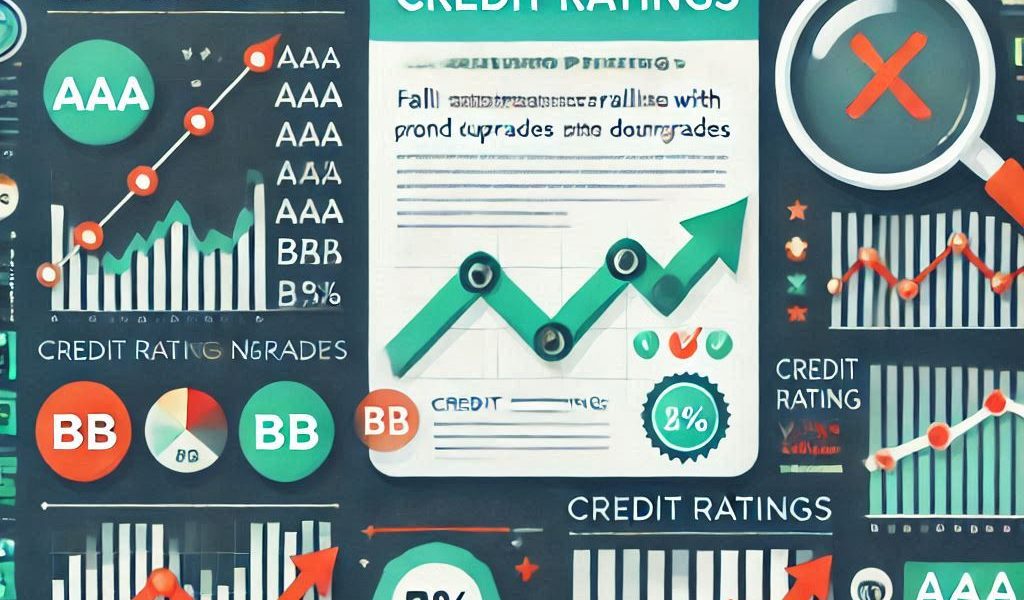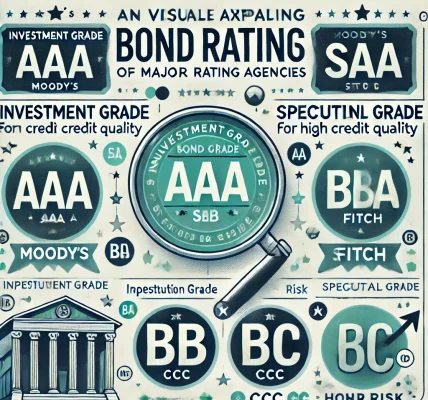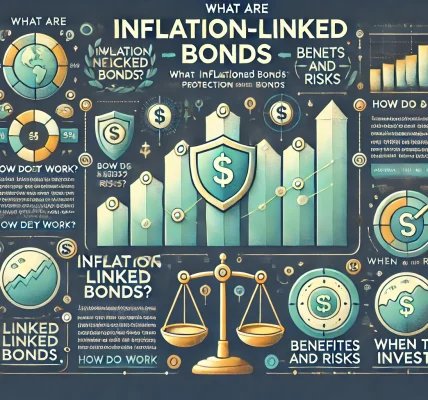Investing in bonds can offer stability and consistent returns, but not all bonds are created equal. One of the most important factors influencing a bond’s price and yield is its credit rating. Understanding how credit ratings impact bond prices is essential for making informed investment decisions. In this blog, we’ll dive deep into the relationship between credit ratings and bond prices, helping you understand their significance in the world of bond investing.
What Are Credit Ratings?
Credit ratings are assessments made by independent rating agencies (like Moody’s, Standard & Poor’s, and Fitch) to evaluate the creditworthiness of a bond issuer. These ratings indicate the likelihood that the issuer will be able to meet its debt obligations, i.e., paying back the principal and interest on time.
Credit ratings are typically divided into two categories:
- Investment-grade bonds: These bonds are issued by financially stable companies or governments. They are considered to have a low risk of default. Ratings range from AAA (highest) to BBB- (lowest) for investment-grade bonds.
- Non-investment-grade (junk) bonds: These bonds carry a higher risk of default but may offer higher yields. Ratings below BB+ are considered non-investment grade or junk bonds.
How Credit Ratings Affect Bond Prices
1. The Relationship Between Credit Ratings and Bond Yields
Credit ratings play a pivotal role in determining a bond’s yield. Typically, bonds with higher credit ratings (investment-grade) offer lower yields because they are considered safer investments. On the other hand, bonds with lower credit ratings (junk bonds) offer higher yields to compensate for the increased risk of default.
- Higher credit ratings: A bond with a high credit rating (AAA, AA) indicates low default risk, which results in lower yields since investors are willing to accept a lower return for a safer investment.
- Lower credit ratings: A bond with a lower credit rating (BB, B, or below) indicates a higher risk of default. To attract investors, these bonds must offer higher yields as a reward for taking on more risk.
2. Impact of Credit Downgrades and Upgrades on Bond Prices
Credit rating agencies periodically assess the creditworthiness of bond issuers. When a bond’s credit rating is downgraded or upgraded, it has a direct effect on its price.
- Credit downgrade: If a bond is downgraded, it suggests the issuer’s financial health has worsened, increasing the risk of default. As a result, the bond price typically falls to reflect the higher risk, and the yield increases to compensate for this higher risk.
- Credit upgrade: Conversely, when a bond is upgraded, it reflects improved financial health of the issuer. As the risk of default decreases, the bond price tends to rise, and the yield decreases, making it a more attractive investment.
3. Bond Price Sensitivity to Credit Ratings
The price of a bond moves inversely to its yield. A higher credit rating usually means a lower yield and vice versa. If an investor purchases a bond with a lower credit rating at a higher yield, they may face potential losses if the credit rating is downgraded, increasing the yield. However, if the rating is upgraded, the bond price could increase, leading to capital gains.
4. The Role of Market Sentiment
Market sentiment also plays a role in how bond prices react to changes in credit ratings. If an issuer’s credit rating is downgraded, market sentiment may become more cautious, driving prices lower even further. Conversely, an upgrade can boost investor confidence and push prices higher. This is particularly true in the case of highly watched bonds, such as government or large corporate bonds, where market sentiment can swing prices more dramatically.
How Investors Should React to Credit Rating Changes
For bond investors, understanding the potential impact of credit rating changes is critical for managing risk and optimizing returns.
- Diversification: One of the best ways to mitigate the risk of credit rating downgrades is through diversification. Holding a mix of bonds with different credit ratings can help smooth out returns and reduce the impact of any single downgrade.
- Monitor Rating Agencies: Investors should keep an eye on reports from credit rating agencies and be proactive about managing their portfolios. If a downgrade is anticipated, it may be wise to reduce exposure to bonds at risk.
- Consider Duration: Bonds with longer durations are more sensitive to credit rating changes. Long-term investors should carefully assess how a downgrade could affect the price of their holdings over time.
- Research Issuers: Regularly researching the financial health of the bond issuer can provide insights into potential rating changes. This proactive approach can help investors make informed decisions before any major changes happen.
Conclusion
Credit ratings are a vital factor influencing the price and yield of bonds. Understanding their impact can help you make more informed investment decisions, whether you’re looking for safety in investment-grade bonds or willing to take on more risk with junk bonds. By monitoring ratings and staying diversified, you can better navigate market changes and optimize your bond investment strategy.




